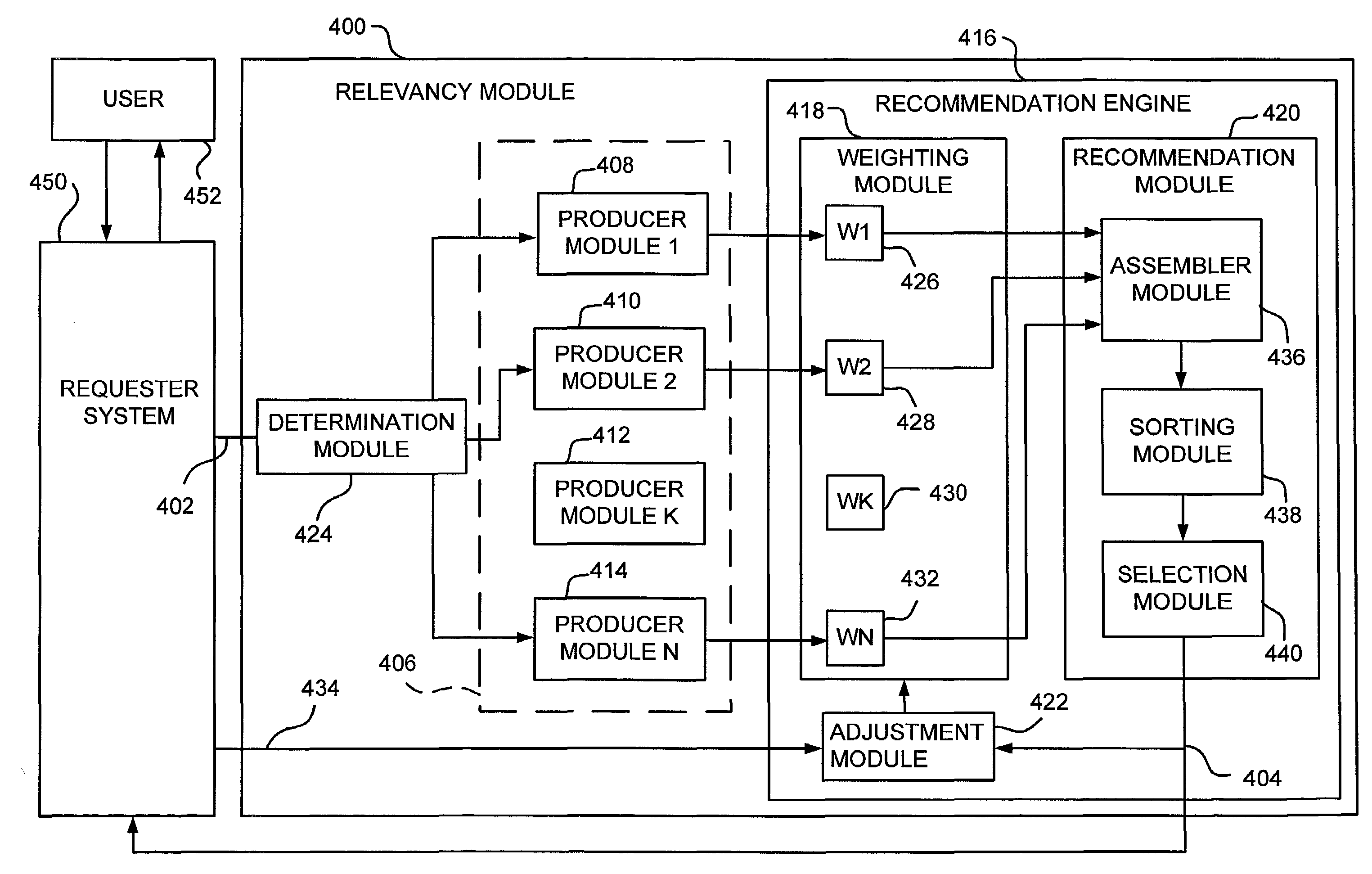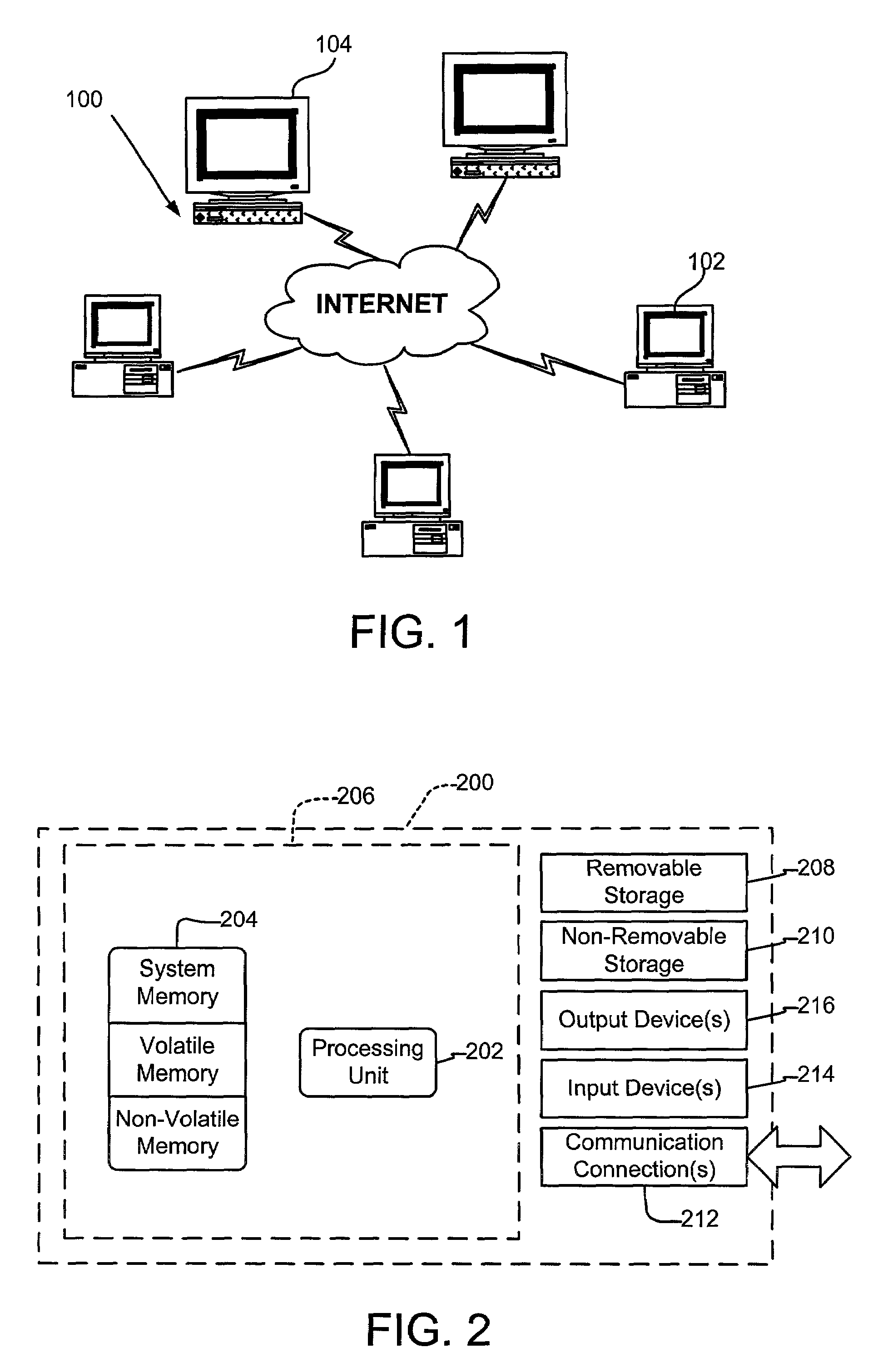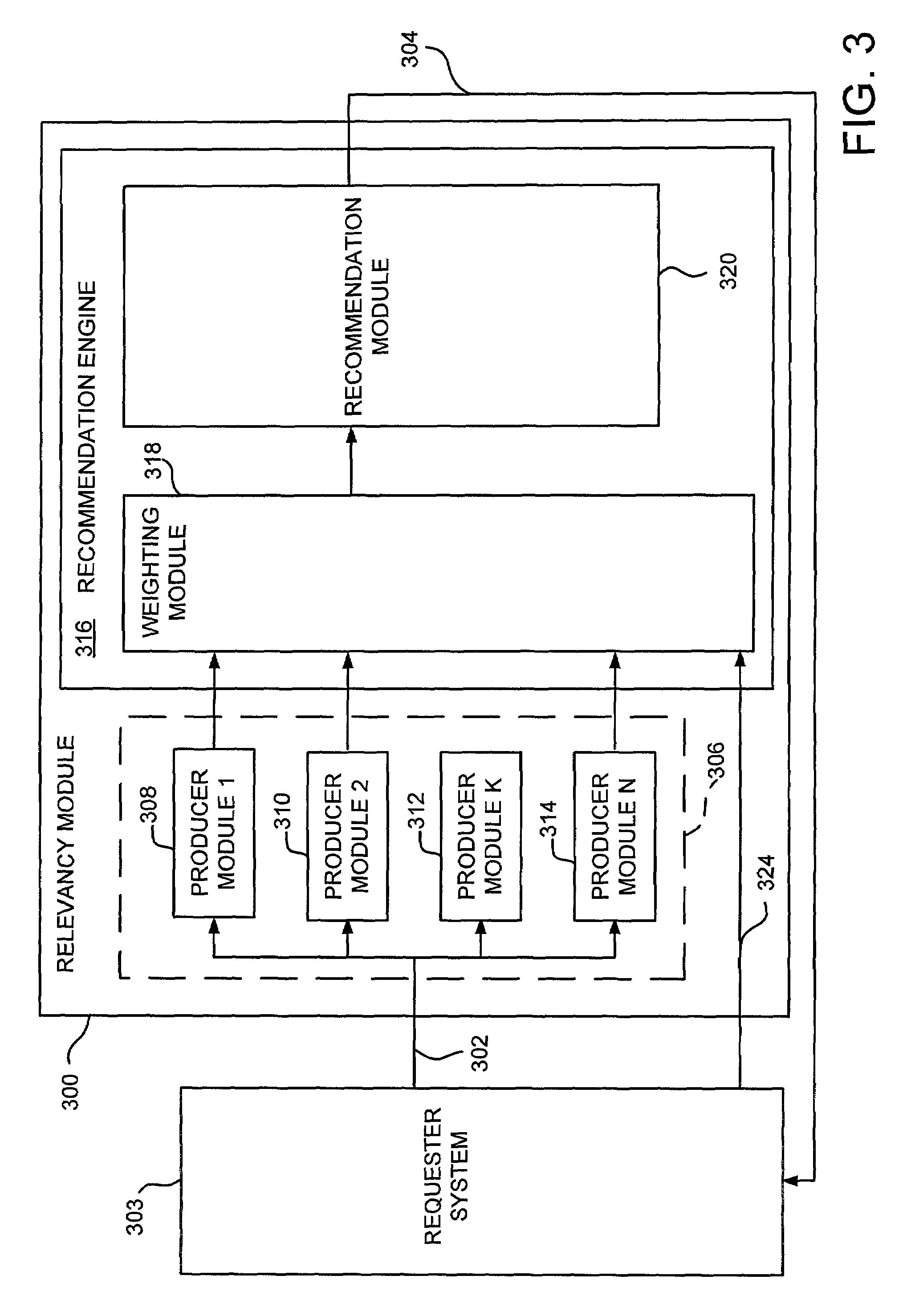System and method for adaptively selecting and delivering recommendations to a requester
a recommendation system and requester technology, applied in the field of system and method for adaptive selection and delivering recommendation to a requester, can solve the problems of increasing difficulty for users to sort through the available content, ineffective type of system, and overwhelming web content of web users
- Summary
- Abstract
- Description
- Claims
- Application Information
AI Technical Summary
Benefits of technology
Problems solved by technology
Method used
Image
Examples
Embodiment Construction
[0030]In general, the present invention relates to systems and methods for adaptively selecting and delivering recommendations to a user over a communications network in real-time. More particularly, the present invention relates to a system that, upon receipt of a request for recommendations, employs a number of producer modules to produce recommendations which are relevant to the requester.
[0031]FIG. 1, illustrates an example of a suitable operating environment in which various embodiments of the present invention may be implemented. The present invention may be implemented as part of a communications network 100 having a client computer system 102 and at least one server computer system 104, as shown in FIG. 1. In such a communications network 100, the client computer system 102 communicates with the server computer system 104 over a network connection, such as the Internet 106. Although shown as a network 100 utilizing a client computer systems and a network computer systems 104...
PUM
 Login to View More
Login to View More Abstract
Description
Claims
Application Information
 Login to View More
Login to View More - R&D
- Intellectual Property
- Life Sciences
- Materials
- Tech Scout
- Unparalleled Data Quality
- Higher Quality Content
- 60% Fewer Hallucinations
Browse by: Latest US Patents, China's latest patents, Technical Efficacy Thesaurus, Application Domain, Technology Topic, Popular Technical Reports.
© 2025 PatSnap. All rights reserved.Legal|Privacy policy|Modern Slavery Act Transparency Statement|Sitemap|About US| Contact US: help@patsnap.com



